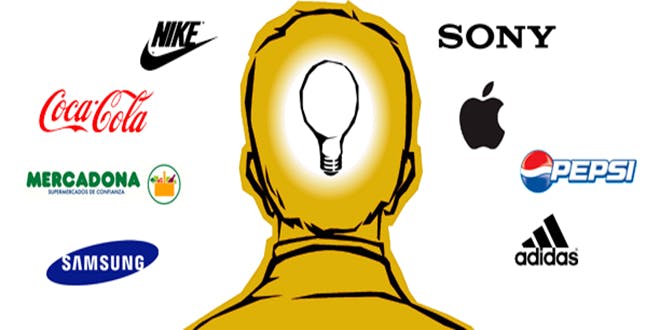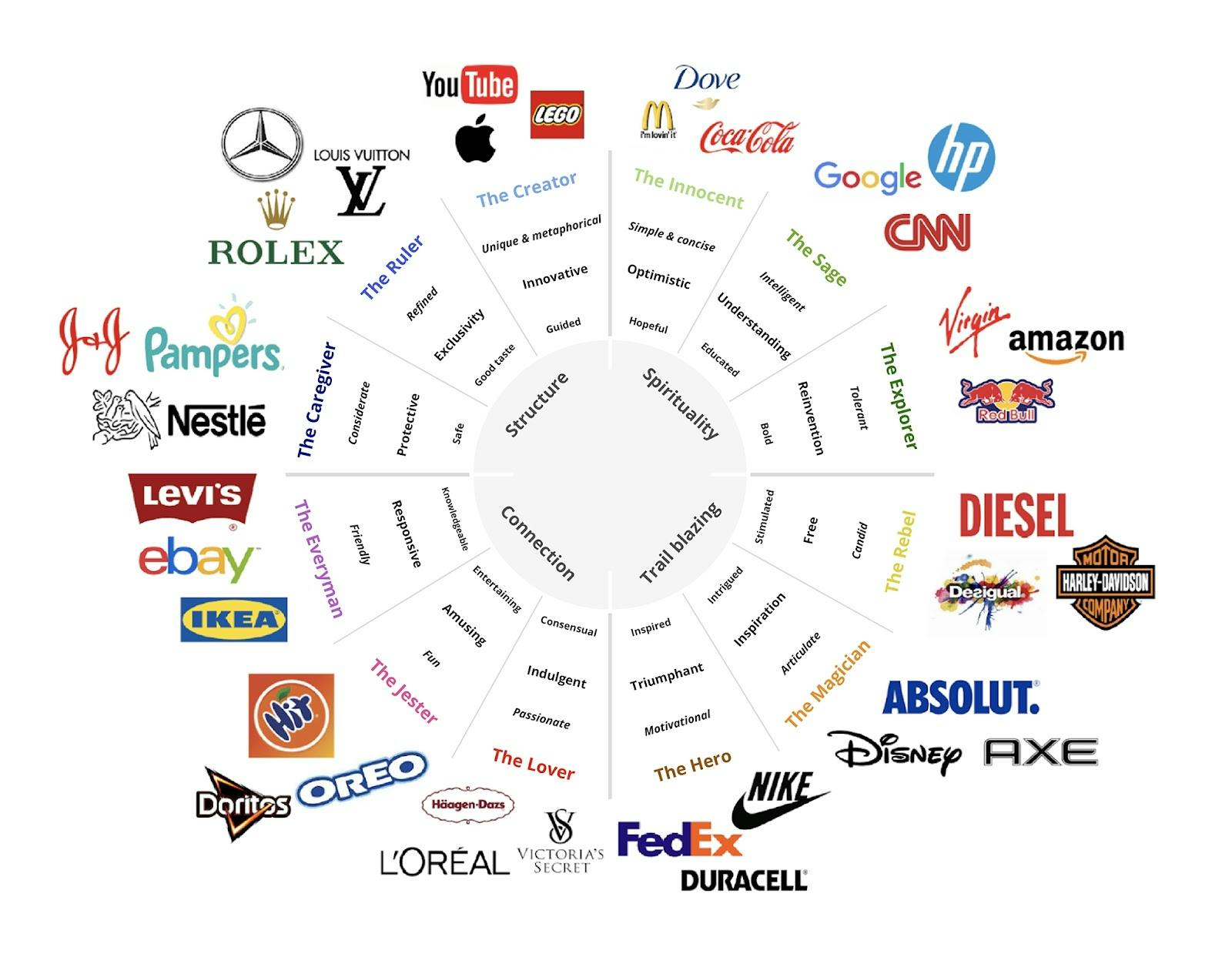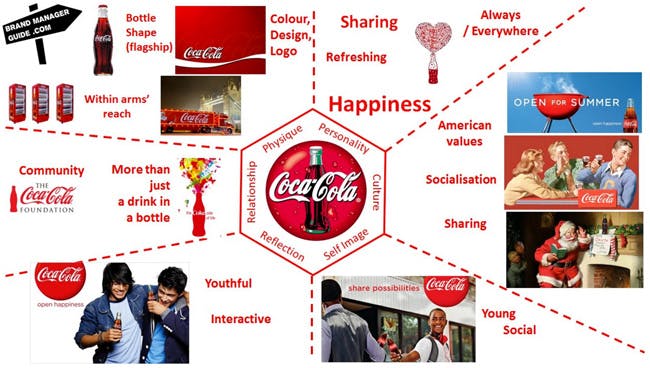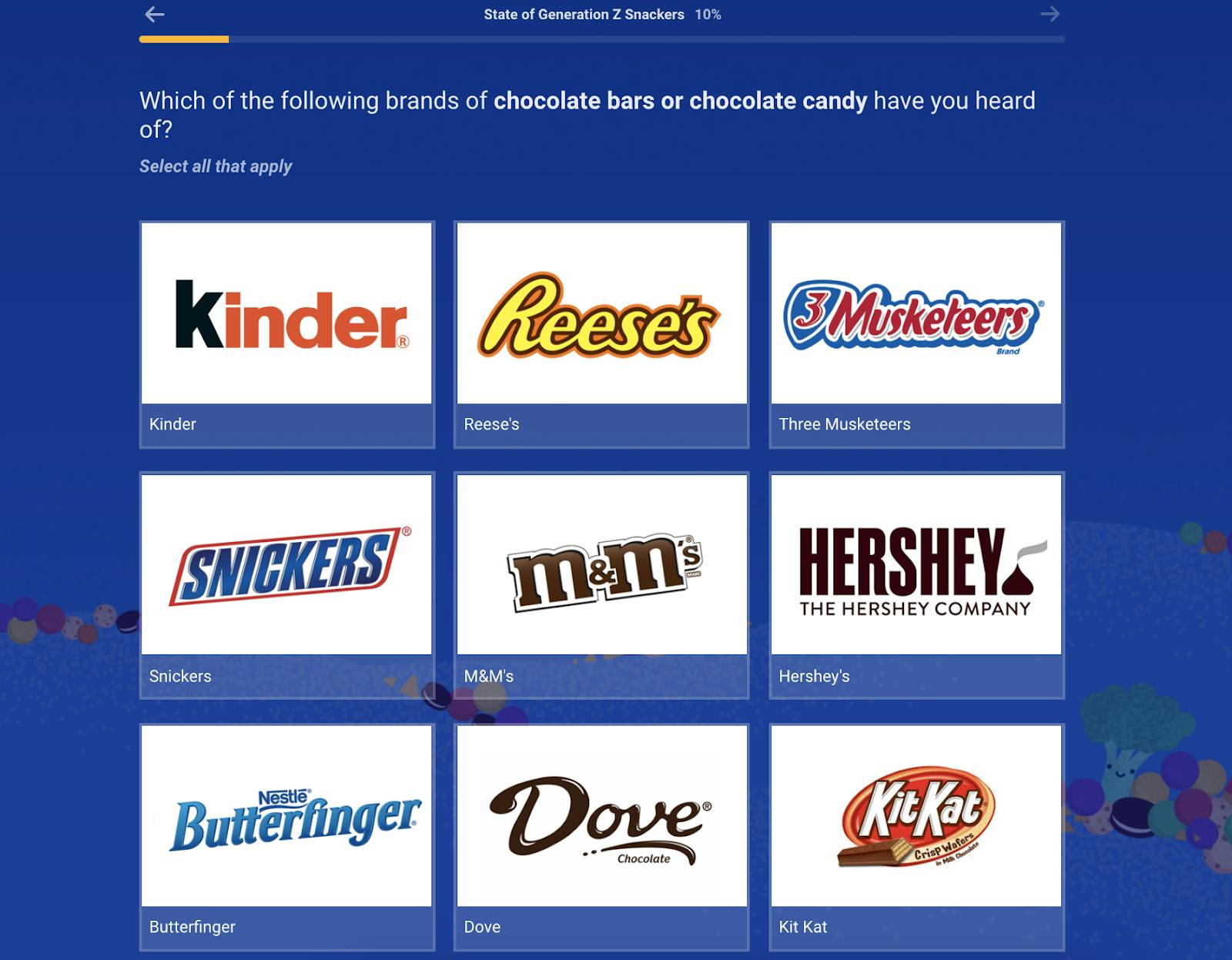Brand awareness: definition, strategy and metrics
May 16th, 2022

Contents
What is brand awareness?
Steps to build and increase brand awareness
Brand awareness metrics
Examples of brand awareness campaigns
Brand awareness is the foundation of every successful marketing strategy. It builds long-term trust in a brand among potential buyers. The more your target audience is familiar with the brand, the easier it will be to market products and services, establish a solid reputation, attract and retain potential customers, and sell quicker or for a higher price. Brand awareness encourages people to develop an instinctive preference for your business and products. It is a good indicator of a future brand’s success.
According to the survey by global communications company Edelman, 81% of consumers are more willing to buy from the brands they trust. What is more, the percentage of respondents who chose brand trust as a deciding factor was almost the same for different markets, genders, ages, and income levels. The study also demonstrates that 74% of buyers avoid advertising by using ad blockers, paying for streaming services, or changing media habits. At the same time, if the customers trust the brand, they are 28% more likely to pay attention to advertising and other communications. Hence, once you build brand awareness, you will arouse the target audience’s interest and encourage them to learn more about your company and products.
What is brand awareness?
Brand awareness is the degree to which your target audience is familiar with your brand and the ability to recognize it under various circumstances. The consumer’s ability to recall or recognize the brand is essential for making a purchasing decision. Before buying a product, a customer should first become aware of the brand and a product category. Awareness does not usually imply that consumers can recall a brand name, but they should be able to recollect several distinctive qualities to complete the purchase. If your objective is to advertise a new product or revive the old one, first and foremost, your brand should focus on creating awareness.
There are two main components of brand awareness: brand recognition and brand recall. Brand recall is the customer’s ability to reproduce a particular brand name from memory, which refers to a specific product category. For example, when prompted by smartphones, consumers should be able to name a precise mobile phone manufacturer. Most people can recall three to five brand names related to discrete product categories. Brand recognition is the consumers’ ability to distinguish the brand once they come across its products. In contrast to brand recall, recognition does not entail identifying a certain brand name. In this case, consumers should be able to recognize the brand by visual packaging or on store shelves.

In today’s highly saturated market, brand awareness reflects a market performance. Companies are competing for consumers' attention by intensifying advertising and promotional efforts. As consumers typically purchase three brands that first come to mind, the primary goal of most companies is to increase the chances that customers would consider the brand during the decision-making process. Therefore, raising brand awareness is crucial for encouraging people to buy specific products. We have described the concept of brand awareness and the importance of increasing it for companies. Now, we will take a more detailed look at ways to build and grow brand awareness.
Steps to build and increase brand awareness
Building and boosting brand awareness can be a complicated process requiring a wide range of strategies. Here are several approaches to let your potential customers learn about your brand and leave a long-lasting positive impression.
Understand your target market
Identifying your target audience is the first step toward developing any successful brand, product, or launching promotional campaign. When you know your customers, you can make your product marketing efforts more focused and address the needs, interests, and requirements of the audience. Make sure your target group understands how your brand differs from others. Define the problem you are trying to solve and the value you offer to customers. Set the company’s objectives, analyze the product or service you are offering and identify the level of customer loyalty you would like to achieve.
Use brand monitoring to gain insights into the audience and analyze direct competitors in your niche. If they show better results, pay attention to their key strategies and borrow the methods you can implement for your marketing campaigns. When you know your customers’ fears, pain points, desires, and tastes, you effectively communicate your marketing message, capture their attention and describe how your products can improve their lives.
Focus on values
Consumers often make choices based on emotions instead of relying on rational reasons. Moreover, people often perceive brands as extensions of their individuality. For that reason, customers prefer companies that share their values. Therefore, you need to ensure that your brand expresses its values clearly and consistently. The best way to achieve this goal is to define a unique value proposition.
A well-crafted, unique selling proposition will help you better describe the advantages of your offer, the ways it can solve customers’ problems, and its differences from competitors. To develop a great USP, you should describe the reasons for creating your brand, think about the positive impact on the world you want to make, and determine the strategy to reach this objective. In addition, you need to define the underlying principles of your behavior and formulate a brief statement.
Give your brand a unique personality
Personality is a set of emotions, feelings, and characteristics that you can assign to the brand. It reflects the traits and qualities consumers associate with your business and products. Brand personality allows your company to seem more human, build a personal connection with every buyer, and nurture relationships with a customer base. Consumers perceive a brand as an old friend if it has human qualities. This is an excellent opportunity to reject the traditional and impersonal marketing approaches and focus on engaging and empathetic techniques.

First, you need to define the features that reflect your brand personality most precisely. The next step is to understand how your audience perceives the brand compared to other companies and product lines. Finally, consider the questions your target customers ask at each stage of the funnel and create content that addresses their concerns. The best way to get your audience to trust you is to communicate with the customers as if they are standing next to you. Although the buying process often takes place online nowadays, companies should not forget that they interact with real people on the other side of the screen.
Another method to develop a recognizable personality is by creating a mascot or finding a brand ambassador who will embody the brand’s characteristics. The brand’s founder can also represent its personality and communicate the brand’s vision, mission, and values. In addition, you can encourage your team to talk about the company in a consistent way across different platforms.
Develop a strong brand identity
Brand identity is a set of visible elements that a company uses to present the right image of the brand to consumers. These components include a recognizable color scheme, design, logo, typography, packaging, and messaging. A memorable identity conveys the tone of your brand and represents its personality. It can be funny, witty, or emotional to trigger powerful feelings in your audience and help your business stand out among numerous competitors. Sometimes, you may need to go through rebranding if your existing brand identity lacks a strong foundation.
The unique color palette and logo design create strong associations with your brand. For example, everybody will recognize Coca-Cola by its classic red color and white letters. The other memorable brand elements include polar bear, ribbon-like typography, and the bottle’s unique shape. Furthermore, brand identity should be consistent with the tone of voice. Coca-Cola’s voice is upbeat, cheerful, and energetic and matches the color palette.

Tell compelling stories
Storytelling is one of the key techniques to raising brand awareness. It can take different forms, such as blog posts, email newsletters, and social media articles. You can tell stories through text, photos, or videos. Positive and authentic stories about your business explain to customers why they need the product or service, what makes you different and why they should trust your company. Stories express emotions and cause empathy that helps consumers remember the brand and products better. The customers want to know what is behind your business and how the company is making an impact.
The brand story should cover both online and offline marketing initiatives. Make it consistent across different platforms and constantly change the story to reflect your company’s progress. Pay attention to increasing consumer engagement instead of focusing solely on the reach. Tell stories about the company’s achievements, the reasons clients choose your products, the benefits of your business, and how your offer will make customers’ lives better. The stories should be relevant and brief and contain powerful words that provoke an emotional response or motivate to take action. Do not forget to include your brand’s purpose, values, and mission in the stories.
Increase your social media presence
Social media marketing is one of the most effective ways to build brand awareness. Today, most consumers research products through social media platforms. If a company provides a positive experience on Facebook and Instagram, 71% of users would recommend it to other people. Demonstrating that your brand pays attention to customer concerns or questions contributes to building good relationships. Always check your accounts at least once a day and answer every comment, message, or mention.
Create new content regularly and frequently. Try different formats and publish entertaining posts. Run contests and giveaways, offer free trials, demos, and product samples to keep the audience engaged. Interact with the customers by using chatbots to provide customer support and collect contact information. Place advertisements that target your potential audience or specific location to get more subscribers. Most social networks allow for choosing parameters like age, gender, region, and interests of people who will see your advertisement, so you can focus on the leads who have higher chances of becoming customers.
Create shareable content and encourage sharing
Produce highly shareable content that motivates consumers to interact with your brand. Examples are infographics, checklists, surveys and polls, questions on social media, sponsored content, blog posts, or videos. By using this strategy, you will be able not only to attract potential customers but also to collect valuable feedback. Include relevant hashtags in your posts to make it easier for people to find similar articles related to your company and products.
Encourage people to share testimonials about your brand and services after they make a purchase. Word-of-mouth marketing is an increasingly effective method of raising brand awareness. People often follow recommendations from their friends and family about the product or service. Put social media sharing buttons on the order confirmation page or include them in email receipts. Customers are often delighted about the product right after the purchase, so if they share it with their followers, other people with similar preferences might notice your brand.
Collaborate with influencers and other brands
Influencer marketing is an excellent way to target an audience that is hard to reach through other marketing channels. A recommendation from an opinion leader creates trust in the brand as people often rely on the advice from influencers more than from relatives or friends. Consider partnering with celebrities, experts, or well-known figures in your niche. Use influencer marketing networks or search social media using specific keywords or sponsored hashtags. Before offering a partnership, make sure that the influencer’s follower base consists of real people. The engagement rate is more critical than the number of subscribers, so carefully review the comment section of the blogger’s profile.
Try co-marketing and partner with other brands with similar audiences as part of your content marketing strategy. For instance, you can create co-branded content or host Instagram live to raise brand awareness for both companies. In addition, you can not only advertise each other’s products and services but also create and produce new offers together.
Launch search engine marketing campaign
Paid promotion on search engines can increase brand awareness by 80%. People usually treat advertisements displayed on Google well as they help find relevant products when consumers search for similar items. To take maximum advantage of search engine marketing, focus on the latest trends, such as voice search engine optimization. Make advertisements more conversational, include long-tail keywords, and apply patterns from real-life communication to your ads.
Use search engine optimization to improve the results even more. Optimize content by performing market research to get better rankings, more traffic, and higher visibility in search results. Discover popular keywords and phrases your customers use when searching for brands or products in your niche. Include the keywords in your website content, picture titles, and headlines.
Start a referral program
The referral program allows for increasing brand awareness through word-of-mouth. This is one of the most effective tactics as consumers who are engaged via referrals already trust your company. Loyal customers receive free items or discounts for recommending your brand to other people. In addition, consumers may tell about your company and products to their family, friends, colleagues, and followers on social media.
To launch a referral program, you need to invite customers to become brand ambassadors by providing a unique code or link. Then people share the code on their social networks, and referral program software analyzes its performance. If somebody uses the code, the program participant receives a reward. In some cases, a brand can provide both the referrer and new customer an incentive for joining the program.
We have discussed several practical ways to build and raise brand awareness. Now we will focus on the methods of estimating the success of these efforts.
Brand awareness metrics
It can be challenging to measure brand awareness and even harder to quantify its ROI. However, there are some indicators that you can use to analyze the effectiveness of your attempts.
Website traffic
To evaluate brand awareness, you need to track direct traffic and overall website traffic. Direct traffic occurs when people go to your website on purpose by typing the URL into the address bar or entering it from a bookmark in a browser. This metric reflects the number of people visiting your website as a result of your SaaS marketing initiatives. Today many people discover companies through social media platforms, so when they visit your website at once, it means that they are already familiar with the brand.
Overall traffic demonstrates how many people on the web engage with your content and keep track of your brand. Of course, you will not know how these consumers became aware of your brand, but they already have enough information to check it online.
Engagement
Social engagement implies comments, likes, shares, and the number of subscribers on social media. This metric reflects how many people interact with the brand on social networks and helps gain insights into customers’ perceptions of your brand. Different tools allow marketers to measure social media engagement. Examples of such software solutions include Sprout Social and Sparktoro.
Social listening
Social listening refers to tracking mentions of your brand on social media. It helps analyze not only the number of comments or discussions but lets you collect valuable feedback concerning your brand. Special tools like Mention and Agorapulse monitor who is using your hashtags, tagging your brand, or discussing it in comments. This strategy provides useful information on how to improve your products or services to meet the needs of your target audience.
Surveys
Surveys are an excellent method to understand what your existing and potential customers think about your company. You can create surveys through SurveyMonkey or Typeform and post them on social media platforms. Pay attention to the audience of the surveys and the questions you are going to put. E.g., if the survey targets potential customers, ask them if they are familiar with your brand. In the case of current customers, inquire how they learned about your company for the first time.

With these metrics, you will be able to implement efficient brand management and build awareness among your existing audience, potential customers, and the broader public. The results help you adjust marketing campaigns to the consumers’ needs and maintain good relationships with clients.
Examples of brand awareness campaigns
Let us take a closer look at some real-world examples of companies attempting to raise brand awareness.
Spotify
A music streaming platform Spotify increases brand awareness by showing the subscribers their annual report. The service collects users’ statistics, including favorite genres, most-listened songs, albums, and artists. The platform has made the results easily shareable. People enjoy posting personalized reports on social networks, so Spotify receives tremendous social media exposure every year. What is more, the service uses influencer marketing and creates personalized statistics for celebrities. It allows the company to save costs on promotion but achieve outstanding results at the same time.
Oreo
Oreo is another brand that uses personalized content to raise awareness. In particular, the company offered subscribers to analyze their recent tweets and create an “Oreoscope” containing customers’ personal traits related to the brand’s products. This strategy made consumers feel special and encouraged them to share information about the products, which increased brand recognition.

Corona
Corona is a well-known beer brand frequently associated with summer and the beach. In honor of World Oceans Day in 2019, the brand developed a campaign named “Protect Paradise” to draw attention to the problem of plastic marine pollution. The company motivated people to clean up local beaches in exchange for a free bottle of Corona. As a result, the brand highlighted the importance of environmental protection and generated more than 23 million trend impressions on Twitter.
Slack
Now Slack is one of the fastest-growing business applications, but it used to be a startup with just 15,000 clients. The company’s key to success was an emphasis on customer relations. Before the launch, Slack generated a significant number of positive publications in online newspapers devoted to startup companies and technology like VentureBeat, Inc., and TechCrunch. Later the company launched “Slack Wall of Love”, where it displayed the tweets with customer testimonials. As a result of these techniques, Slack gained incredible brand awareness.
Brand awareness is a crucial component of your company’s success. It has a major impact on every aspect of your business, including customer perception, marketing initiatives, and revenue. The techniques mentioned in this article will allow you to generate leads, stand out among competitors and motivate customers to recommend your products to family and friends.
